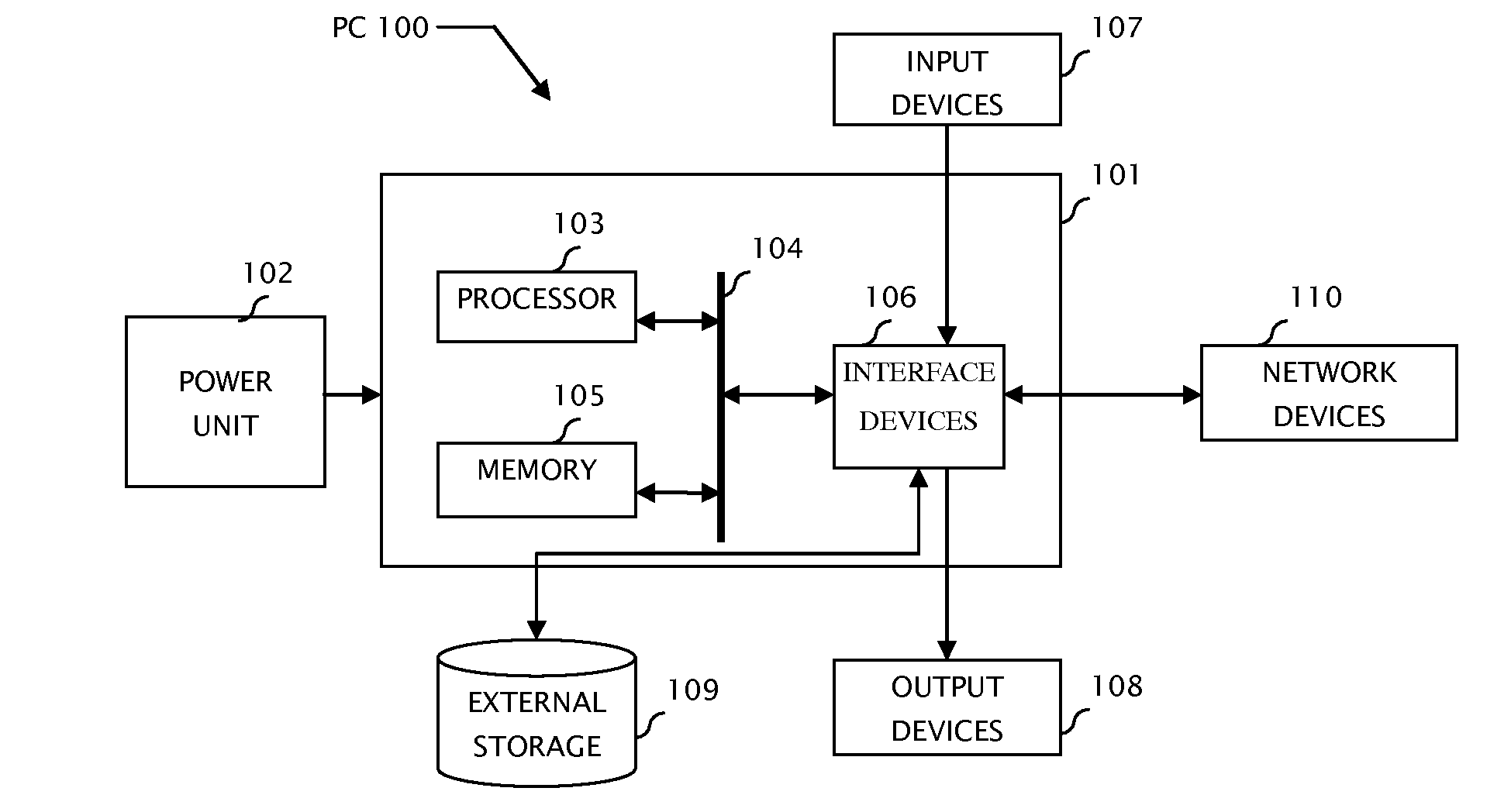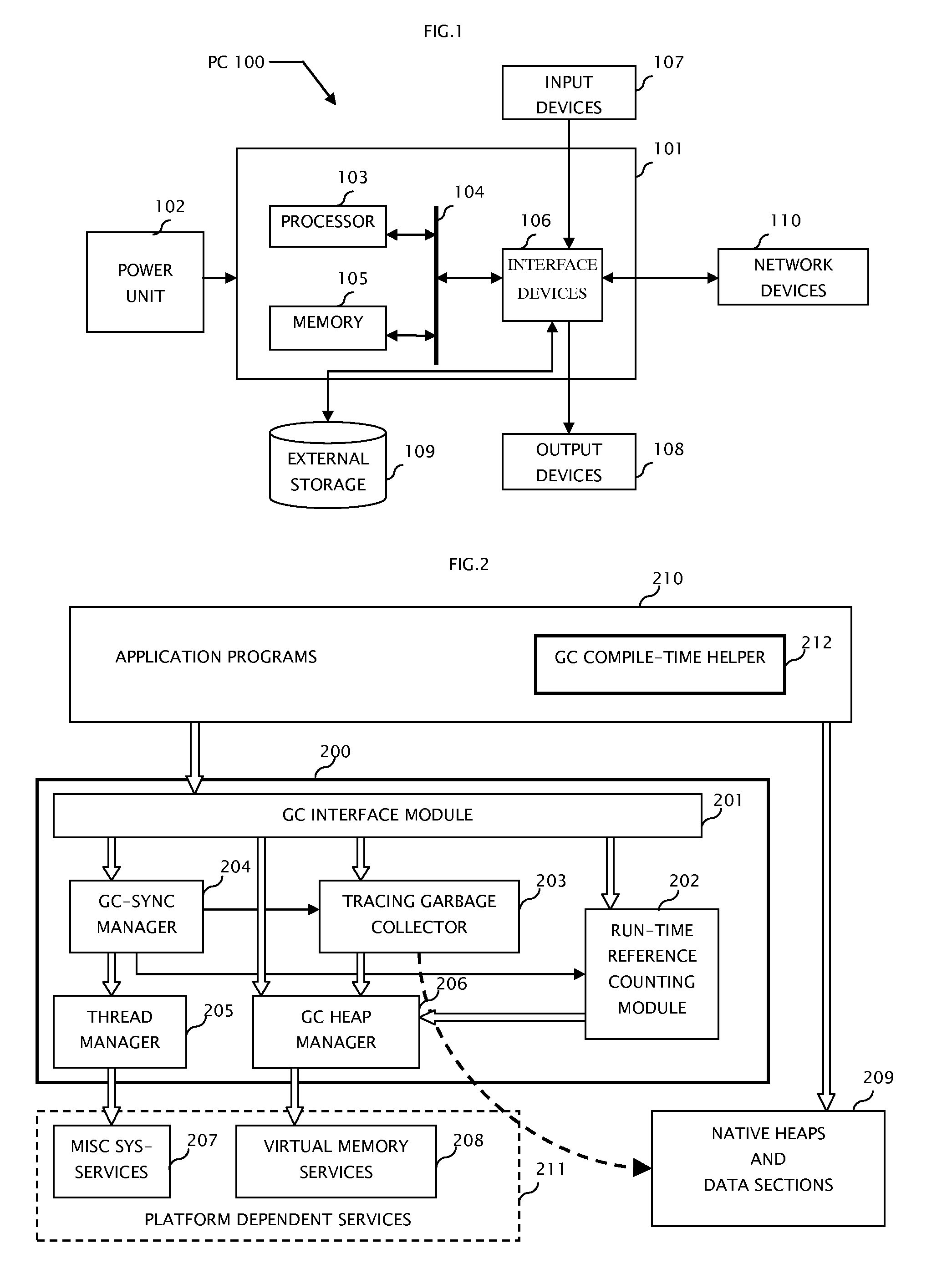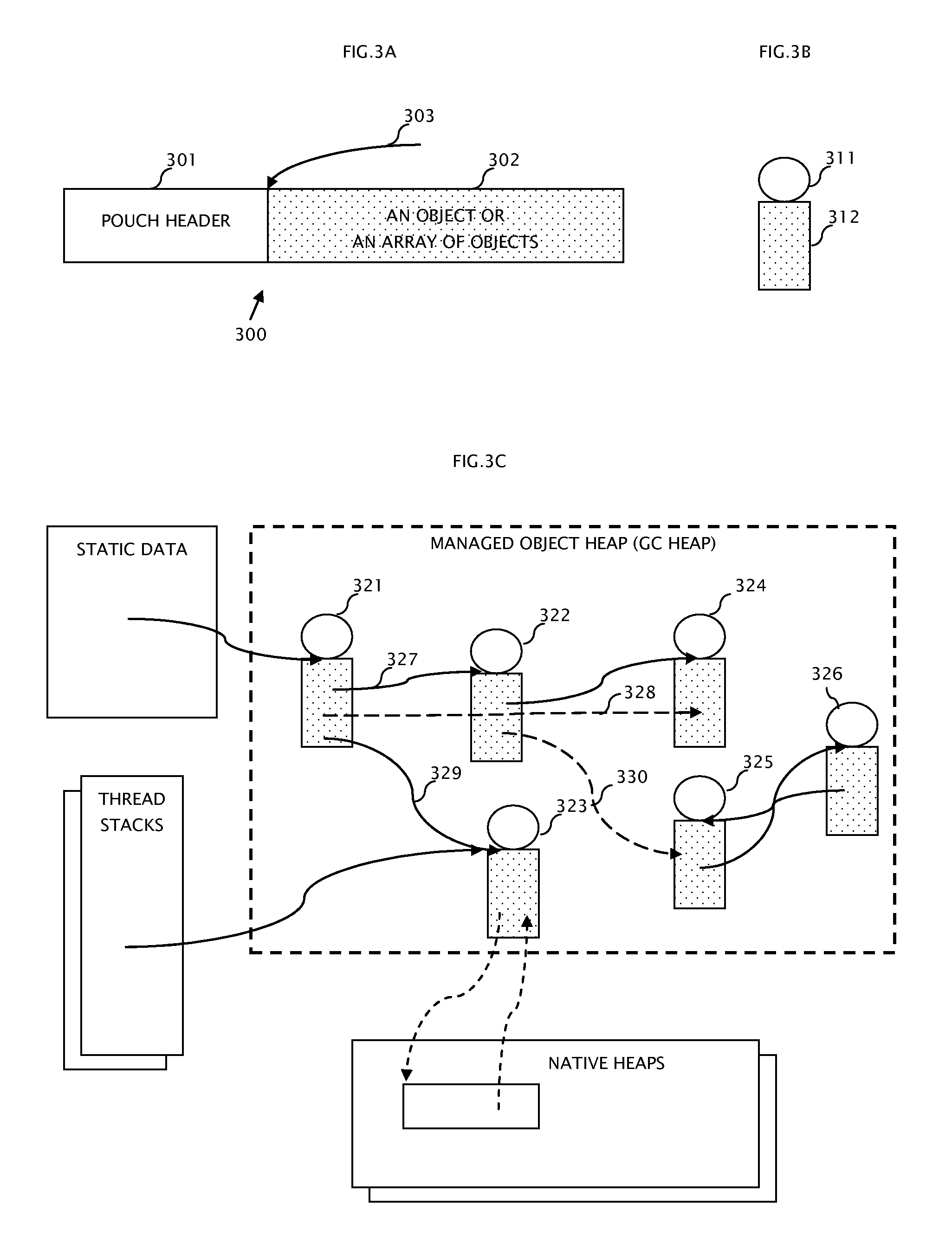System and method for computer automatic memory management
a computer system and memory management technology, applied in computing, instruments, data processing applications, etc., can solve the problems of catastrophic system corruption, memory leakage, affecting the performance of the application and other applications in the same system, etc., to eliminate all suspensions of application threads, memory usage is very efficient, and the effect of accurate collection
- Summary
- Abstract
- Description
- Claims
- Application Information
AI Technical Summary
Benefits of technology
Problems solved by technology
Method used
Image
Examples
embodiment 1
[0079]A block diagram of embodiment 1 of the present invention is illustrated in FIG. 2. Garbage collector 200 is hardware and operating system independent and may therefore be embedded in various products such as web browsers, servers, etc. Garbage collector 200 can be in a user-mode application, or part of the operating system kernel, or part of platforms between application and kernel, such Java and .NET virtual machines, and can be part of other systems that need automatic memory management.
[0080]Garbage collector 200 comprises: GC interface module 201, runtime reference counting module 202, tracing garbage collector 203, GC synchronization manager 204, thread manager 205, and GC heap manager 206. GC compile-time helper code 212 is dispersed throughout the application program 210 in order to gain the maximum performance boost. Application program 210 can directly access native heaps and data sections 209 without any restriction. A well-designed backend interface wraps platform-d...
embodiment 2
[0162]Embodiment 2 of the present invention is a software-based hard real-time concurrent collector.
[0163]As shown in FIG. 1, a public computer system comprises a processor and a memory storage, is able to run predefined programs, including binary code, p-code, source code, etc. FIG. 11 is a block diagram of the main components of embodiment 2 of the present invention. Garbage collector 1103 is running on a public computer system shown in FIG. 1, as part of the memory management system. Garbage collector 1103 comprises: the GC interface module 1104, runtime reference counting module 1106, tracing garbage collector 1105, and virtual GC heap module 1107. The GC compile-time helper codes 1102 are dispersed throughout the whole application code 1101 to gain performance boost. The system directly allocates managed objects and other data structures from native heap 1108.
[0164]Most parts of the embodiment 2 are the same of embodiment 1, if not particularly pointed out, can be considered to...
PUM
 Login to View More
Login to View More Abstract
Description
Claims
Application Information
 Login to View More
Login to View More - R&D
- Intellectual Property
- Life Sciences
- Materials
- Tech Scout
- Unparalleled Data Quality
- Higher Quality Content
- 60% Fewer Hallucinations
Browse by: Latest US Patents, China's latest patents, Technical Efficacy Thesaurus, Application Domain, Technology Topic, Popular Technical Reports.
© 2025 PatSnap. All rights reserved.Legal|Privacy policy|Modern Slavery Act Transparency Statement|Sitemap|About US| Contact US: help@patsnap.com



